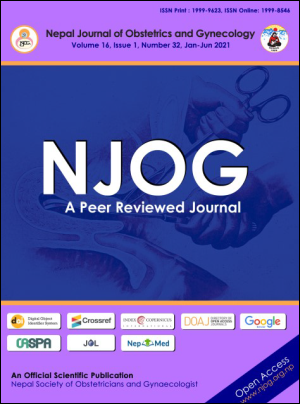Study of Semen Analysis Patterns in Male Partner of Infertile Couple Attending Tertiary Level Hospital of Nepal
Keywords:
azoospermia, infertility, oligospermia, semenAbstract
Aims: The aim of this study is to analyze the pattern of semen abnormality in male partner of infertile couple in Nepal.
Methods: A retrospective study of semen sample of male partner of infertile couple analyzed in Department of pathology, Dhulikhel Hospital from January 2014 to December 2018. All semen samples were processed and analyzed according to methods and standards outlined by World Health Organization laboratory manual for the examination and processing of human semen 2010.
Results: A total of 520 semen samples were analyzed. Our study shows 221 (44%) abnormal for different semen parameters and asthenozoospermia (39.3%) is the most common abnormality followed by azoospermia (28.8 %), Oligoasthenozoospermia (17.9 %), Oligozoospermia (8.7 %), Oligoasthenoteratozoospermia (3.5 %) and teratozoospermia (1.8 %).
Conclusions: Abnormal semen parameters remain significant causes in overall infertility in our set up with asthenozoospermia and azoospermia were common abnormalities in male partner. Semen analysis is an inevitable tool for evaluation of infertility in male partner. Further study is required to find out the possible etiologies of male infertility for holistic management of infertility.
Downloads
Downloads
Published
How to Cite
Issue
Section
License
Copyright (c) 2021 Surendra Koju, Suman Raj Tamrakar, Ramita Shankhadev

This work is licensed under a Creative Commons Attribution-NonCommercial 4.0 International License.
Copyright on any research article in the Nepal Journal of Obstetrics and Gynaecology is retained by the author(s).
The authors grant the Nepal Journal of Obstetrics and Gynaecology a license to publish the article and identify itself as the original publisher.
Articles in the Nepal Journal of Obstetrics and Gynaecology are Open Access articles published under the Creative Commons CC BY-NC License (https://creativecommons.org/licenses/by-nc/4.0/)
This license permits use, distribution and reproduction in any medium, provided the original work is properly cited, and it is not used for commercial purposes.



